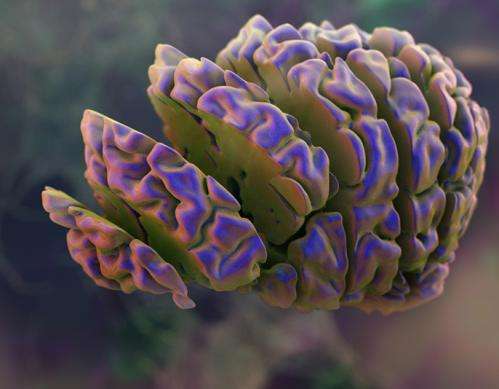The neurochemistry of addiction

We've all heard the term "addictive personality," and many of us know individuals who are consistently more likely to take the extra drink or pill that puts them over the edge. But the specific balance of neurochemicals in the brain that spurs him or her to overdo it is still something of a mystery.
"There's not really a lot we know about specific molecules that are linked to vulnerability to addiction," said Tod Kippin, a neuroscientist at UC Santa Barbara who studies cocaine addiction. In a general sense, it is understood that animals—humans included—take substances to derive that pleasurable rush of dopamine, the neurochemical linked with the reward center of the brain. But, according to Kippin, that dopamine rush underlies virtually any type of reward animals seek, including the kinds of urges we need to have in order to survive or propagate, such as food, sex, or water. Therefore, therapies that deal with that reward system have not been particularly successful in treating addiction.
However, thanks to a collaboration between UCSB researchers Kippin; Tom Soh, professor of mechanical engineering and of materials; and Kevin Plaxco, professor of chemistry and biochemistry—and funding from a $1 million grant from the W. M. Keck Foundation—the neurochemistry of addiction could become a lot less mysterious and a lot more specific. Their study, "Continuous, Real-Time Measurement of Psychoactive Molecules in the Brain," could, in time, lead to more effective therapies for those who are particularly inclined toward addictive behaviors.
"The main purpose is to try to identify individuals that would be vulnerable to drug addiction based on their initial neurochemistry," said Kippin. "The idea is that if we can identify phenotypes—observable characteristics—that are vulnerable to addiction and then understand how drugs change the neurochemistry related to that phenotype, we'll be in a better position to develop therapeutics to help people with that addiction."
To identify these addiction-prone neurochemical profiles, the researchers will rely on technology they recently developed, a biosensor that can track the concentration of specific molecules in vivo, in real time. One early incarnation of this device was called MEDIC (Microfluidic Electrochemical Detector for In vivo Concentrations). Through artificial DNA strands called aptamers, MEDIC could indicate the concentration of target molecules in the bloodstream.
"Specifically, the DNA molecules are modified so that when they bind their specific target molecule they begin to transfer electrons to an underlying electrode, producing an easily measurable current," said Plaxco. Prior to the Keck award, the team had shown that this technology could be used to measure specific drugs continuously and in real time in blood drawn from a subject via a catheter. With Keck funding, "the team is hoping to make the leap to measurements performed directly in vivo. That is, directly in the brains of test subjects," said Plaxco.
For this study, the technology would be modified for use in the brain tissue of awake, ambulatory animals, whose neurochemical profiles would be measured continuously and in real time. The subjects would then be allowed to self-dose with cocaine, while the levels of the drug in their brain are monitored. Also monitored are concomitant changes in the animal's neurochemistry or drug-seeking (or other) behaviors.
"The key aspect of it is understanding the timing of the neurochemical release," said Kippin. "What are the changes in neurochemistry that causes the animals to take the drug versus those that immediately follow consumption of the drug?"
Among techniques for achieving this goal, a single existing technology allows scientists to monitor more than one target molecule at a time (e.g., a drug, a metabolite, and a neurotransmitter). However, Kippin noted, it provides an average of one data point about every 20 minutes, which is far slower than the time course of drug-taking behaviors and much less than the sub-second timescale over which the brain responds to drugs. With the implantable biosensor the team has proposed, it would be possible not only to track how the concentration of neurochemicals shift in relation to addictive behavior in real time, but also to simultaneously monitor the concentrations of several different molecules.
"One of our hypotheses about what makes someone vulnerable to addiction is the metabolism of a drug to other active molecules so that they may end up with a more powerful, more rewarding pharmacological state than someone with a different metabolic profile," Kippin said. "It's not enough to understand the levels of the compound that is administered; we have to understand all the other compounds that are produced and how they're working together."
The implantable biosensor technology also has the potential to go beyond cocaine and shed light on addictions to other substances such as methamphetamines or alcohol. It also could explore behavioral impulses behind obesity, or investigate how memory works, which could lead to further understanding of diseases such as Alzheimers.

















